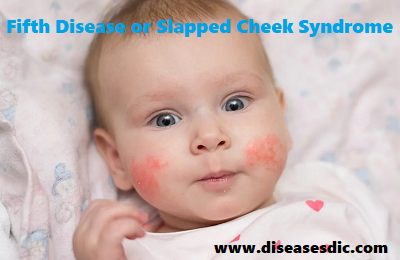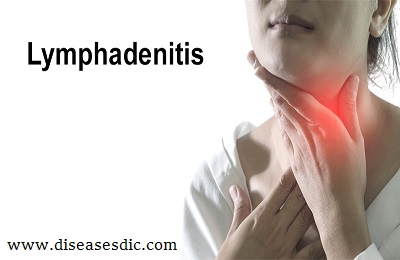What are germ cell tumors?
Germ cell tumors are malignant (cancerous) or nonmalignant (benign, noncancerous) tumors that are comprised mostly of germ cells. Germ cells are the cells that develop in the embryo (fetus, or unborn baby) and become the cells that make up the reproductive system in males and females. These germ cells follow a midline path through the body after development and descend into the pelvis as ovarian cells or into the scrotal sac as testicular cells. Most ovarian tumors and testicular tumors are of germ cell origin. The ovaries and testes are called gonads.
Tumor sites outside the gonad are called extragonadal sites. The tumors also occur along the midline path and can be found in the head, chest, abdomen, pelvis, and sacrococcygeal (lower back) area.
Germ cell tumors are rare. Germ cell tumors account for about 2 to 4 percent of all cancers in children and adolescents younger than age 20.
Germ cell tumors can spread (metastasize) to other parts of the body. The most common sites for metastasis are the lungs, liver, lymph nodes, and central nervous system. Rarely, germ cell tumors can spread to the bone, bone marrow, and other organs.
What Types of Germ Cell Tumors are there?
There are several, but five are more common than others:
- Teratomas – also called “dermoid cysts” – are not usually cancer, but they can be. They’re the most common germ cell tumors found in the ovaries. Usually, they’re treated with surgery.
- Germinomas are cancer. They’re called “dysgerminomas” if they’re in the ovaries and seminomas in the testicles. Nonseminomatous germ cell tumors are cancer and are found in the brain.
- Yolk sac tumors, (also called endodermal sinus tumors) are usually cancer. They form in the testicles and ovaries. It’s often an aggressive cancer that spreads quickly to the lymph nodes and other parts of the body. They’re typically treated with surgery and chemotherapy.
- Embryonal carcinoma has cancer cells that usually mix with another type of germ cell tumor. For example, embryonal carcinoma cells could mix with a teratoma and make it cancer.
- Choriocarcinoma is a rare cancer that happens in the placenta. It can affect both the mother and baby.
What Causes Them?
Changes in the genes of a germ cell can cause it to grow out of control, which leads to a tumor. Doctors aren’t sure what triggers that change.
Still, you may be more likely to a germ cell tumor if you have:
- An undescended testicle (one or both testicles haven’t dropped into the scrotum)
- Birth defects in your central nervous system, genitals, lower spine, and urinary tract
- Genetic conditions like Klinefelter syndrome or Turner syndrome, where you have an extra or missing sex chromosome
- Other family members who had germ cell tumors
Germ Cell Tumor: Risk Factors
A risk factor is anything that increases a person’s chance of developing a tumor. Although risk factors often influence the development of a tumor, most do not directly cause a tumor. Some children with several risk factors never develop a tumor, while others with no known risk factors do.
The following factors may raise a child’s risk of developing an extracranial, gonadal germ cell tumor:
- Cryptorchidism. If a child has an undescended testicle, they have a higher risk of developing a testicular seminoma tumor. To learn more, see the full guide to testicular cancer on this same website.
- Turner syndrome. Turner syndrome is a genetic condition in which a girl is born with a missing X chromosome. Girls with this condition have a higher risk of developing a gonadoblastoma, a benign tumor that can eventually turn into cancer.
- Intersex conditions, such as androgen insensitivity syndrome. Androgen insensitivity syndrome is when the body of a person who is genetically male, with 1 X and 1 Y chromosome, is resistant to male hormones called androgens. A person with this syndrome has a higher risk of developing a gonadoblastoma or other germ cell tumors.
The following factor may raise a person’s risk of developing an extracranial, extragonadal germ cell tumor:
- Klinefelter’s syndrome. Men with this genetic condition are born with an extra X chromosome, so they have XXY chromosomes. Klinefelter’s syndrome is connected to a higher risk of a germ cell tumor in the chest.
What are the symptoms of germ cell tumors?
If your child has a germ cell tumor, the symptoms depend on the location of the tumors. Symptoms can include the following:
- Abdominal pain
- Constipation
- A lump on the lower back or near the anus, especially in a baby
- Cough or trouble breathing
- Onset of puberty at a very young age
- In teenage boys: a solid lump on the testicles that may enlarge or become painful
What are possible complications of germ cell tumors?
A person may have complications from the tumor or from treatment. They may include:
- Damage to the brain or nervous system that causes problems with coordination, muscle strength, speech, or eyesight
- Problems after surgery, such as infection, bleeding, and problems with general anesthesia
- Infection and bleeding from chemotherapy
- Delayed growth and development
- Learning problems
- Problems with reproduction (infertility)
- Return of the cancer
- Growth of other cancers
How are germ cell tumors diagnosed?
In addition to a complete medical history and physical examination, diagnostic procedures for germ cell tumors may include:
Biopsy. A sample of tissue is removed from the tumor and examined under a microscope.
Complete blood count (CBC). This measures size, number, and maturity of different blood cells in a specific volume of blood.
Additional blood tests. These tests may include blood chemistries, evaluation of liver and kidney functions, tumor cell markers, and genetic studies.
Multiple imaging studies, including:
Computed tomography (CT) scan. This is a diagnostic imaging procedure that uses a combination of X-rays and computer technology to produce horizontal, or axial, images (often called slices) of the body. A CT scan shows detailed images of any part of the body, including the bones, muscles, fat, and organs. CT scans are more detailed than general X-rays.
Magnetic resonance imaging (MRI). This is a diagnostic procedure that uses a combination of large magnets, radio frequencies, and a computer to produce detailed images of organs and structures within the body, without the use of X-rays.
X-ray. This diagnostic test uses invisible electromagnetic energy beams to produce images of internal tissues, bones, and organs onto film.
Ultrasound (also called sonography). This is a diagnostic imaging technique that uses high-frequency sound waves and a computer to create images of blood vessels, tissues, and organs. Ultrasounds are used to view internal organs as they function, and to assess blood flow through various vessels.
Bone scans. This involves pictures or X-rays taken of the bone after a dye has been injected that’s absorbed by bone tissue. These are used to detect tumors and bone abnormalities.
Staging
The stage of a cancer describes its size and whether it has spread from where it started. Knowing the stage helps doctors to decide on the most appropriate treatment.
Generally cancer is divided into four stages:
Stage 1: The cancer is small, has not spread and has been completely removed.
Stages 2 and 3: The cancer is larger and may not have been completely removed, or may have spread to nearby organs.
Stage 4: The cancer has spread to other parts of the body.
Cancer that has spread to distant parts of the body and formed new tumours is known as secondary or metastatic cancer.
How Are Germ Cell Tumors Treated?
Children with benign germ cell tumors will have surgery to remove the tumor. Those with malignant tumors will first go through a process called staging.
Staging is a classification system that helps doctors figure out how far the cancer has progressed. It looks at things like:
- the size of the tumor (or tumors)
- how deep the tumor is in an organ
- whether the tumor has spread to nearby or distant lymph nodes or organs
This information, as well as a child’s age and overall health, helps doctors form treatment plans. The plans may include these options, used together or alone:
Surgery. Children with malignant tumors may have surgery to remove as many of the cancerous cells as possible.
Chemotherapy. Chemotherapy works to treat cancer throughout the body. Chemo is also the most important therapy to treat microscopic (very tiny) cells that can hide in other parts of the body but aren’t seen on a scan or felt on exam. Often, doctors combine several chemotherapy drugs to attack the cancer cells in different ways.
Radiation therapy. This treatment uses high-energy radiation from X-rays, gamma rays, or fast-moving subatomic particles (called particle or proton beam therapy) to target and destroy cancer cells. Radiation usually isn’t needed to treat germ cell tumors because most are very sensitive to chemotherapy.
Looking Ahead
When your child needs treatment for any type of tumor, it can feel overwhelming. But you’re not alone. To find support, talk to your child’s doctor or a hospital social worker. Many resources are available to help you and your child get through this difficult time.
Effects of treatment
The prognosis is good for germ cell tumours. Most children are cured.
General side effects of chemotherapy
Bone marrow suppression (myelosuppression)
Chemotherapy drugs decrease the production of blood cells by the bone marrow for a variable period of time. This results in low red blood cells (anaemia), low white blood cells (neutropenia) and platelets (thrombocytopenia). Your child may need blood or platelet transfusions and will be at increased risk of infections. The doctors and nurses caring for your child will tell you more about these side effects.
Nausea and vomiting
Some of the chemotherapy drugs used may make your child feel sick or vomit. We will give anti-sickness drugs at the same time to stop nausea and vomiting. These are usually very effective.
Hair loss
Temporary hair loss is common.
Specific drugs
For details of the side effects of individual drugs please see Macmillan specific drug information leaflets.
General side effects of radiation therapy
Side effects of external radiation therapy may include skin changes, nausea and vomiting, diarrhea, fatigue, painful sores in the mouth and throat and dry mouth or thick saliva.
Most side effects of radiation are temporary, but some rare serious side effects can be permanent. In some cases, radiation to the chest can also cause lung damage, which may lead to problems breathing and shortness of breath
 Diseases Treatments Dictionary This is complete solution to read all diseases treatments Which covers Prevention, Causes, Symptoms, Medical Terms, Drugs, Prescription, Natural Remedies with cures and Treatments. Most of the common diseases were listed in names, split with categories.
Diseases Treatments Dictionary This is complete solution to read all diseases treatments Which covers Prevention, Causes, Symptoms, Medical Terms, Drugs, Prescription, Natural Remedies with cures and Treatments. Most of the common diseases were listed in names, split with categories.







